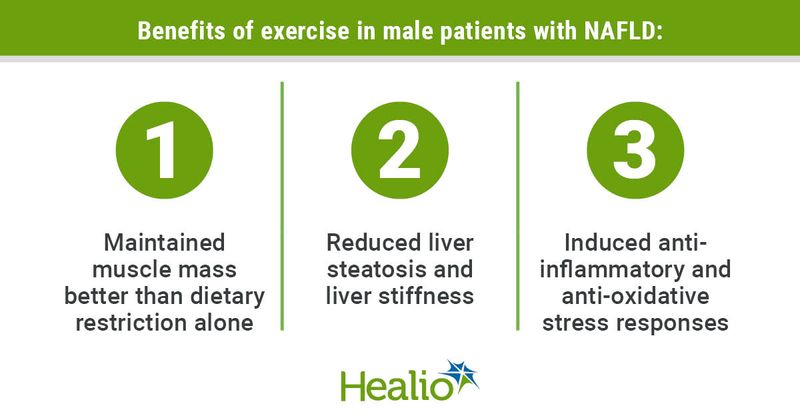Exercise beneficial for liver function among men with NAFLD
Exercise provided considerable weight loss-independent benefits in patients with nonalcoholic fatty liver disease, according to research published in JHEP Reports.
“Weight loss, as the result of lifestyle modications, including dietary and exercise therapies, remains the cornerstone of NAFLD management,” Sechang Oh, PhD, University of Tsukuba in Ibaraki, Japan, and colleagues wrote. “However, achieving and/or maintaining weight loss in the absence of a well-designed approach and expert support is difcult. ... Therefore, an additional therapeutic option beyond simple weight loss should be considered for effective NAFLD management.”

In a retrospective study, 83 male patients with obesity participated in either aerobic exercise (n = 54) or dietary restriction (n = 29) to induce weight loss over a 3-month period. Researchers analyzed changes in hepatic parameters and compared effects of exercise on individual tissues (liver, adipose tissue and skeletal muscle).
Independent of weight loss, exercise reduced liver steatosis by 9.5% and liver stiffness by 6.8%, resulting in a 16.4% reduction in Fibroscan-AST scores. Additionally, exercise increased muscle strength by 11.6% while reducing inflammation and oxidative stress (ferritin: –22.3%; thiobarbituric acid: –12.3%) through Nrf2 target gene activation. Researchers noted higher-intensity exercise further reduced liver steatosis and improved liver enzyme activities and organokine profiles.
“Patients on exercise regimens may become demotivated and drop out if they do not experience significant weight loss,” Junichi Shoda, senior study author, University of Tsukuba, said in a press release. “Therefore, moderate to vigorous intensity exercise should be integrated in all NAFLD therapeutic regimens and patients at risk for nonalcoholic steatohepatitis should be encouraged to persevere with moderate to high intensity exercise regardless of whether or not they lose weight.”
